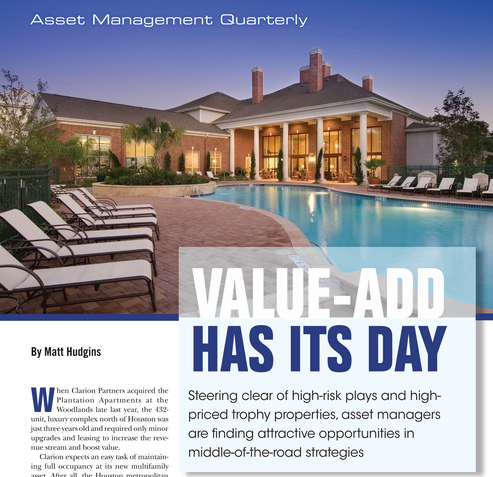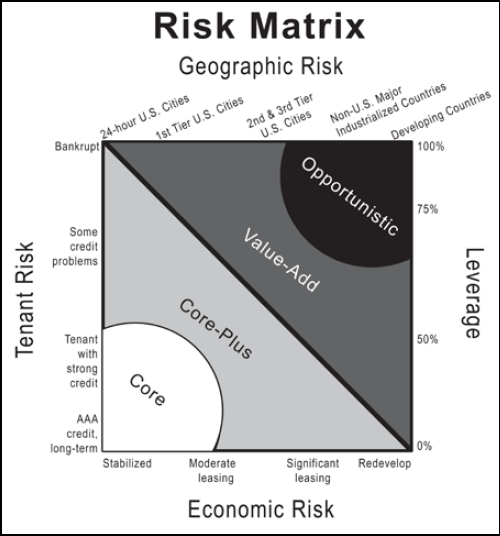Good article in Asset Management Quarterly Value Add Has Its Day talking about how investors have split since the Financial Meltdown in 2007 into a risk adverse group favoring mostly Class A apartment building investments in core markets and a more risk tolerant group seeking high returns by purchasing distressed debt.
This has created an opportunity to generate good returns with investments in properties that need help of some kind. A few bullet points:
- “It’s [The polarization] left this big open hole in the middle of the playing field for middle-risk, middle-return strategies, and it’s made the pricing on value add very attractive,”
- “It should be an extremely desirable place to invest but you haven’t seen a lot of investors go there yet, which is why it’s such an interesting opportunity.”
- buyers needn’t take on excessively risky scenarios in order to reap a handsome return of 11-15% over the medium term
- “You can put on less financing and take a less involved program risk and get the returns you could five years ago with higher risk,”
- Multifamily projects with room to add value, then, may be those with good locations and a few correctable problems. That enables an investor to acquire the asset for a lower price then upgrade to bring its income stream in line with those of core properties
- “This strategy allows an investor to own a property at below replacement cost and, to the extent the repositioning strategy is well executed, realize an income stream at a yield that is a premium to core properties today,”
A good location is still key but finding a property with ‘the right things wrong with it,’ especially one with a distressed owner will provide good returns for the savvy apartment building investor.
What is ‘Value Add’? From The Real Estate Research Corporation www.rerc.com:
A value-add investment implies that an investor adds to the value of the property by pursuing an upgrading strategy. This could include a modest level of physical property upgrading (i.e., a Class B property upgraded to Class A), taking moderate lease-up risk on an unstabilized property, or buying a property with contract rents below market.
RERC had a nice graphic in one of their papers from a few years ago that shows the spectrum of real estate investment:
This matrix is geared more towards institutional investors but it explains the relationships between the terms commonly used around real estate investment.


Manny from Nampa ID wrote to ask: “I am just wondering why these days are the best time for it and if it is so good then why is it, like you say, still has very few investors?
Manny thanks for your question. It seems like the apartment building investment coverage lately has been almost entirely about new and/or class A properties in gateway cities where cap rates have been bid down to extremely low levels. As the article points out it is possible to earn better returns with less risk by pursuing a value add strategy. I wanted to raise the awareness of investors who are not big players in the institutional space that there are plenty of opportunities in multifamily today if you are willing to dig a little.
How are apartments doing there in the Boise/Nampa MSA?